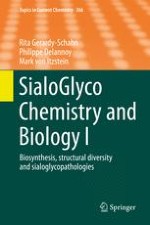2015 | OriginalPaper | Chapter
Polysialic Acid in Brain Development and Synaptic Plasticity
Authors : Herbert Hildebrandt, Alexander Dityatev
Published in: SialoGlyco Chemistry and Biology I
Publisher: Springer Berlin Heidelberg
Activate our intelligent search to find suitable subject content or patents.
Select sections of text to find matching patents with Artificial Intelligence. powered by
Select sections of text to find additional relevant content using AI-assisted search. powered by
